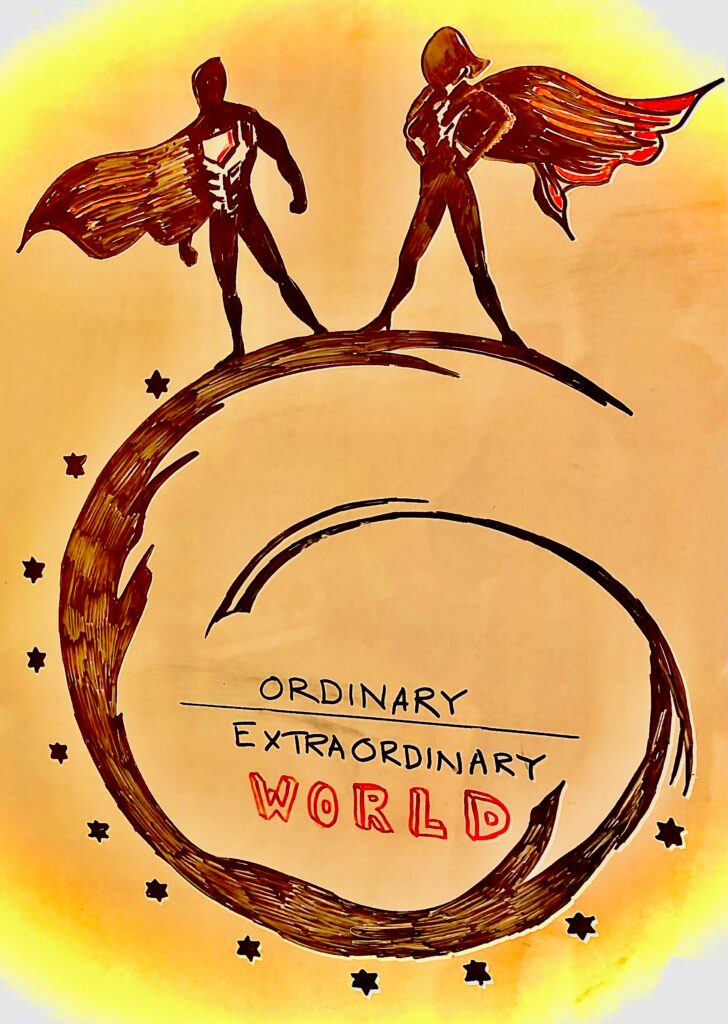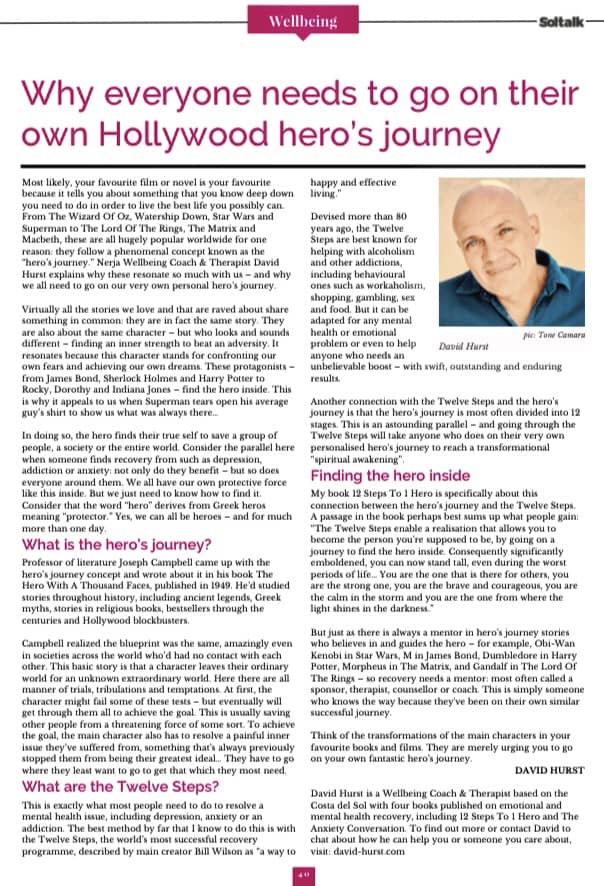Why everyone needs to go on their own Hollywood hero’s journey

Most likely, your favourite film or novel is your favourite because it tells you about something that you know deep down you need to do in order to live the best life you possibly can. From The Wizard Of Oz, Watership Down, Star Wars and Superman to The Lord Of The Rings, The Matrix and Macbeth, theseare all hugely popular worldwide for one reason: they follow a phenomenal concept known as the “hero’s journey”. Nerja Wellbeing Coach & Therapist David Hurst explains why these resonate so much with us – and why we all need to go on our very own personal hero’s journey.
Virtually all the stories we love and that are raved about share something in common: they are in fact the same story. They are also about the same character – but who looks and sounds different – finding an inner strength to beat an adversity.
It resonates because this character stands for confronting our own fears and achieving our own dreams. These protagonists – from James Bond, Sherlock Holmes and Harry Potter to Rocky, Dorothy and Indiana Jones – find the hero inside. This is why it appeals to us when Superman tears open his average guy’s shirt to show us what was always there…
In doing so, the hero finds their true self to save a group of people, a society or the entire world. Consider the parallel here when someone finds recovery from such as depression, addiction or anxiety: not only do they benefit – but so does everyone around them. We all have our own protective force like this inside. But we just need to know how to find it. Consider that the word “hero” derives from Greek heros meaning “protector”. Yes, we can all be heroes – and for much more than one day.
What is the hero’s journey?
Professor of literature Joseph Campbell came up with the hero’s journey concept and wrote about it in his book The Hero With A Thousand Faces, published in 1949. He’d studied stories throughout history, including ancient legends, Greek myths, stories in religious books, bestsellers through the centuries and Hollywood blockbusters.
Campbell realized the blueprint was the same, amazingly even in societies across the world who’d had no contact with each other. This basic story is that a character leaves their ordinary world for an unknown extraordinary world. Here there are all manner of trials, tribulations and temptations. At first, the character might fail some of these tests – but eventually will get through them all to achieve the goal.
This is usually saving other people from a threatening force of some sort. To achieve the goal, the main character also has to resolve a painful inner issue they’ve suffered from, something that’s always previously stopped them from being their greatest ideal… They have to go where they least want to go to get that which they most need.
What are the Twelve Steps?
This is exactly what most people need to do to resolve a mental health issue, including depression, anxiety or an addiction. The best method by far that I know to do this is with the Twelve Steps, the world’s most successful recovery programme, described by main creator Bill Wilson as “a way to happy and effective living”.
Devised more than 80 years ago, the Twelve Steps are best known for helping with alcoholism and other addictions, including behavioural ones such as workaholism, shopping, gambling, sex and food. But it can be adapted for any mental health or emotional problem or even to help anyone who needs an unbelievable boost – with swift, outstanding and enduring results.
Another connection with the Twelve Steps and the hero’s journey is that the hero’s journey is most often divided into 12 stages. This is an astounding parallel – and going through the Twelve Steps will take anyone who does on their very own personalised hero’s journey to reach a transformational “spiritual awakening”.
Finding the hero inside
My book 12 Steps To 1 Hero is specifically about this connection between the hero’s journey and the Twelve Steps. A passage in the book perhaps best sums up what people gain: “The Twelve Steps enable a realisation that allows you to become the person you’re supposed to be, by going on a journey to find the hero inside. Consequently significantly emboldened, you can now stand tall, even during the worst periods of life…
“You are the one that is there for others, you are the strong one, you are the brave and courageous, you are the calm in the storm and you are the one from where the light shines in the darkness.”
But just as there is always a mentor in hero’s journey stories who believes in and guides the hero – for example, Obi-Wan Kenobi in Star Wars, M in James Bond, Dumbledore in Harry Potter, Morpheus in The Matrix, andGandalf in The Lord Of The Rings – so recovery needs a mentor: most often called a sponsor, therapist, counsellor or coach. This is simply someone who knows the way because they’ve been on their own similar successful journey.
Think of the transformations of the main characters in your favourite books and films. They are merely urging you to go on your own fantastic hero’s journey.
This is my latest article for Soltalk magazine: http://www.soltalk.com/comment/may-2022/

